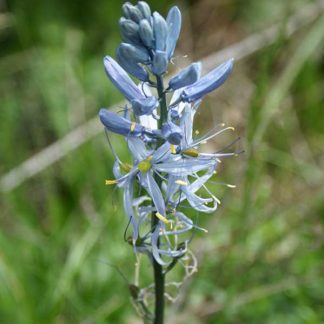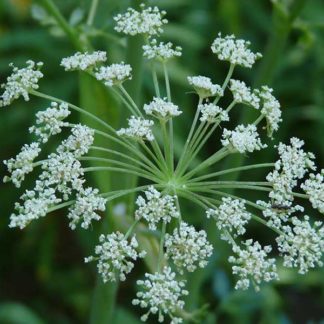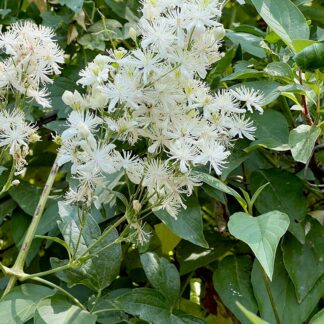riparian
Showing 1–12 of 44 results
-

Allium brevistylum / short-styled onion
- clusters of 7-15 urn-shaped flowers atop a single flowering stalk
- pink with 6 tepals
- leaves much shorter than the inflorescence
- leaves grow from base and are "grass-like"
- swampy meadows and along streams
- smells like onions/garlic
-

Anticlea elegans / mountain death camas
- cream to greenish-white flowers; overall hexagonal appearance
- branched flowering stem with multiple flowers not tightly packed
- 6 tepals (petals + sepals), greenish-yellow nectar glands
- grass/lily-like leaves
- blooms in summer (July/August)
-

Artemisia cana / silver sagebrush
- Low perennial, silvery shrub
- Highly aromatic, like sagebrush
- Entire leaves - no lobes
- Nondescript, inconspicuous flowers in small clusters with leaf-like bracts
- Grows in more moist habitat than other Artemisia spp.
-

Bassia scoparia / burningbush
- large, annual herb (forb)
- leaves long-ish and narrow
- inflorescence a highly branched spike with teeny green/yellow flowers
- may form huge, invasive colonies
- whole plant turns red in fall
- a tumbleweed
- especially in disturbed areas and wastelands in the Valley
-

Betula pumila / bog birch
- limited to bogs/fens/swamps and wetlands
- shrub to about 6 feet tall
- reddish bark on twigs
- leaves rounded-fan shaped, ca. 1 inch; coarsely toothed
- inflorescences - catkins (cone-like); separate male and female
-

Bistorta bistortoides / American bistort
- rocky areas, tundra/alpine
- inflorescence a 2" dense cylinder with many teeny white flowers
- notable protruding stamens
- leaves basal, long/thin and leathery
-

Camassia quamash / small camas
- immediately visible for its star-shaped blue flowers and yellow anthers
- flowers borne on a spike-like raceme, opening from the bottom up
- multiple flowers open at one time
- leaves are grass-like, growing from a bulb
- large seed capsules with ca. 30 roundish black seeds, ripe in late summer
-

Cicuta douglasii / water hemlock
- HIGHLY TOXIC
- primarily on continuously wet soils, e.g. ditches, stream banks, pond margins, marshes.
- white compound umbel inflorescence typical of the Apiaceae/Umbelliferae
- multiply compound leaves with prominent veins ending in notches between lobes
-

Clematis ligusticifolia / western white clematis
- climbing vine... makes dense canopy
- in canyons and streamside thickets
- compound leaves with 5-15 leaflets, often widely spaced
- white flowers with 4 "petals", many pistils and stamens — late summer
- fruit is fluffy white cluster in Sept/Oct
-

Cornus sericea / red osier dogwood
- shrub with opposite branching and red bark, brightest in fall/winter
- common along streams especially
- small white flowers, 4 petals, in clusters
- white or blue-ish white berries in fall
- opposite leaves with parallel veins
-

Crataegus douglasii / black hawthorn
- slightly thorny shrub or small tree, to 30 feet
- often forms thickets
- broad leaves with toothed edges, clumped at ends of branches
- clumps of white, globe-shaped flowers in spring; prominent black anthers
- clumps of black "berries" in autumn
-

Cynoglossum officinale / houndstongue
- reddish-purple flowers in upper leaf axils
- forms basal rosette with hairy leaves in first year
- stem leaves lance shaped, hairy, rough
- fruit - small nutlets with barbs or hooks
Showing 1–12 of 44 results